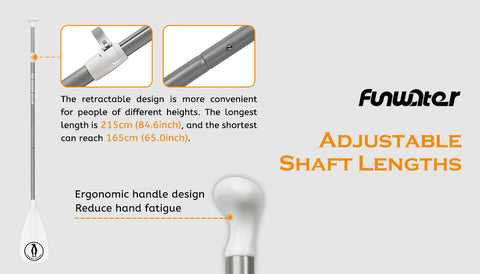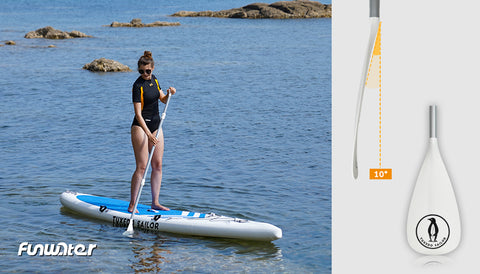The Evolution of Stand Up Paddle Board Paddle Design
The humble paddle is the lifeline of stand-up paddle boarding (SUP), a crucial tool that has undergone significant evolution over the years. From its inception to the modern-day designs, paddle technology has transformed, aiming to enhance performance, efficiency, and comfort for paddlers. Let's take a deep dive into the fascinating journey of stand-up paddle board paddle design evolution.
Traditional Beginnings
Historical Roots:
The roots of paddle boarding trace back centuries, with indigenous cultures utilizing paddles made from natural materials like wood, bone, or even reeds. These paddles were basic in design but effective for navigating water bodies.
Introduction of Modern Materials:
As paddle boarding gained traction as a recreational activity, traditional materials gave way to modern ones. Aluminum and plastic emerged as primary materials due to their durability and affordability. These early designs focused more on functionality than ergonomics.

Evolutionary Milestones
Shift to Fiberglass and Carbon Fiber:
The late 20th century witnessed a shift towards fiberglass and carbon fiber construction. These materials offered lightweight, high-performance options, revolutionizing paddle design. They allowed for better strength-to-weight ratios, enabling paddlers to exert less energy while paddling.
The introduction of adjustable shaft lengths added versatility to paddle design. Paddlers could now customize their paddles to match their height or the type of paddling they intended to do, whether in calm waters or rougher conditions.
Blade Shapes and Angles:
Blade designs underwent extensive refinement. Manufacturers experimented with different shapes and angles to optimize efficiency in the water. Variations in blade sizes, dihedral angles, and surface area catered to various paddling styles and preferences.

Contemporary Innovations
Ergonomic Handles and Grips:
Modern paddles prioritize ergonomics, featuring comfortable handles and grips that reduce strain on the wrists and arms during long paddling sessions. Designs consider the natural alignment of the hand and arm for a more comfortable grip.
Hybrid Materials and Construction:
Hybrid constructions combining materials like carbon fiber, fiberglass, and even wood are gaining popularity. These blends offer a balance between lightweight performance and durability, catering to diverse paddling needs.
Performance-Enhancing Features:
Innovative features such as blade scoops, dihedral angles, and textured surfaces aim to maximize efficiency and minimize resistance through the water. These refinements enhance the paddling experience for both recreational and competitive paddlers.

Future Possibilities
Integration of Smart Technology:
The integration of smart technology, such as sensors to track strokes and force exertion, might offer insights into paddling techniques and efficiency. This data could potentially aid paddlers in refining their skills and performance.
Sustainable Materials and Manufacturing:
The paddle boarding community is increasingly conscious of environmental impact. Future designs might focus on sustainable materials and eco-friendly manufacturing processes, aligning with the growing emphasis on sustainability in sports equipment.
Customization and Personalization:
Advancements in manufacturing techniques might enable more personalized paddles tailored to individual preferences, allowing paddlers to fine-tune their equipment for optimal performance and comfort.

The evolution of stand-up paddle board paddle design reflects a journey of innovation and refinement. From rudimentary tools to technologically advanced and ergonomic marvels, paddles have transformed, catering to the diverse needs and preferences of paddlers. As technology continues to progress and environmental consciousness grows, the future of paddle design holds promise, aiming to deliver enhanced performance, sustainability, and personalized experiences on the water.





Leave a comment